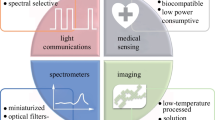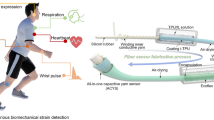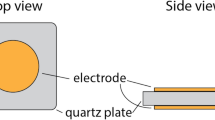Abstract
Today’s image-based systems in civil security rely on sensors based either on CMOS or CCD technology, and they do not analyze color with sufficient equivalence to the human eye. The main reason for this is that the function of the fundamental color matching curves of the cones in the human eye can hardly be reproduced by technical systems [1]. Common color sensors are optimized for the three-area method in accordance with the standard DIN 5033-6. In civil security applications, for example, color sensors are used to identify the potential danger of whitish powder samples. Colorimetric classification based on the three-area method only provides suboptimal results [2], but not an unequivocal optical description. A series of tests performed at the IMT with more than 30 types of whitish powder samples were carried out with a spectrophotometer. These measurements showed that specimens with similar or different chemical compositions cannot be distinguished by the human eye, using the three-area method, exhibit characteristic differences in the CIE-L*a*b* measurement system under spectral method conditions. Until now, the realization of the spectral method on chip has been impossible with common color sensors. In this paper, we present a-Si:H-based bias-sensitive ni3p photodiodes, which have been fabricated successfully in a low temperature PECVD process. Present research focuses on the optimization of the continuous tunability of a-Si:H multispectral photodiodes, to increase the number of spectral stimulus specifications.
Similar content being viewed by others
References
M. Richter, “Einführung in die Farbmetrik”, 2. ed., (De Guryter, 1981).
M. Bohnert and J. Werp, Rechtsmedizin, 9, 218–221 (1999).
B. Lange, “Kolorimetrische Analyse”, 6. ed., (Verlag Chemie, 1964).
P. Rieve, J. Giehl, Q. Zhu and M. Böhm, Proc. Mater. Res. 420, 159–164 (1996).
P. Rieve, PhD Thesis, (University of Siegen, 2000).
M. Sommer, P. Rieve, M. Verhoeven, M. Böhm, B. Schneider, B. van Uffel and F. Librecht, Proc. IEEE Workshop on CCD and Advanced Image Sensors, Japan (1999).
T. Lulé, M. Wagner, M. Verhoeven, H. Keller and M. Böhm, IEEE Journal of Solid-State Circuits 35, 732–739 (2000)
M. Böhm, T. Lulé, H. Fischer, J. Schulte, B. Schneider, S. Benthien, F. Blecher, S. Coors, A. Eckardt, H. Keller, P. Rieve, K. Seibel, M. Sommer and J. Sterzel, Digest of Technical Papers Symposium on VLSI Circuits, 202–203, (1998).
C. Merfort, K. Seibel, K. Watty and M. Böhm, Microelectron Eng. (2010)/ DOI 10/1016/j.mee.2009.12.052 .
K. Watty, C. Merfort, K. Seibel, L. Schöler and M. Böhm, Phys. Status Solidi A, 1–4 (2010) /DOI 10.1002/pssa.200982722.
B. Schneider, P. Rieve and M. Böhm, “Handbook of Computer Vision and Applications”, (Academic Press, 1999).
Author information
Authors and Affiliations
Rights and permissions
About this article
Cite this article
Merfort, C., Seibel, K., Bablich, A. et al. Continuous Tunable Optical Detectors with a-Si:H Bias Sensitive Photodiodes. MRS Online Proceedings Library 1305, 1703 (2011). https://doi.org/10.1557/opl.2011.299
Published:
DOI: https://doi.org/10.1557/opl.2011.299




